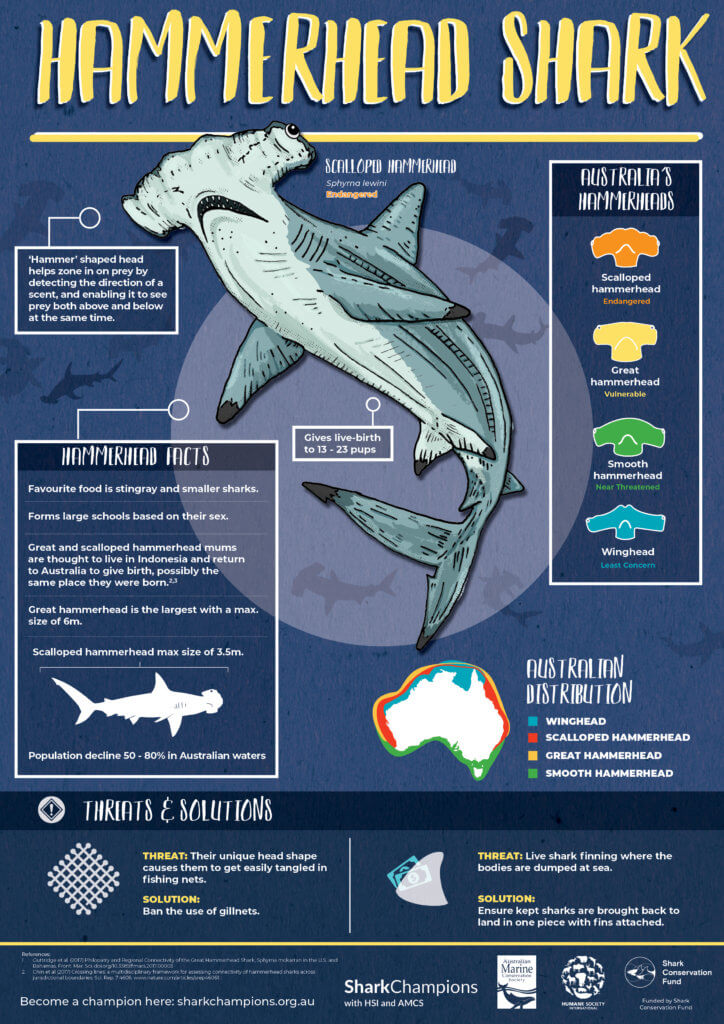Hammerhead sharks are an iconic and endangered species inhabiting Australia’s waters. But they are under threat. To save our sharks, we need to implement stronger protection measures and reduce fishing pressure.
Threatened Status in Australian waters:
- Great Hammerhead – Endangered (Action Plan*); not listed (EPBC Act 1999)
- Scalloped Hammerhead – Endangered (Action Plan*); Conservation Dependent (EPBC Act 1999)
- Smooth Hammerhead – Near Threatened (Action Plan*); not listed (EPBC Act 1999)
- Winghead – Vulnerable (Action Plan*); not listed (EPBC Act 1999)
*The Action Plan for Sharks and Rays 2021 is an assessment of extinction risk of 328 species found in Australian waters. Each species’ extinction risk was assessed by applying the IUCN Red List Categories at the national level (i.e. Australia only).
Location:
- Great Hammerhead: NSW, QLD, NT, WA
- Scalloped Hammerhead: NSW, QLD, NT, WA
- Smooth Hammerhead: NSW, VIC, TAS, SA, WA
- Winghead: QLD, NT, WA
About Hammerhead Sharks
- The unique ‘hammer’ shaped head helps the shark zone in on prey by detecting the direction of a scent, and enabling it to see prey both above and below at the same time.
- Like humans, hammerhead sharks are long-lived, reach maturity after several years, and have few babies. These characteristics make them particularly vulnerable to overfishing.
- Australian hammerhead shark populations are in decline. Scalloped hammerheads are estimated to have lost up to ~80% of their original population in Australian waters (2).
- Hammerhead sharks are particularly vulnerable to being caught in gillnets (fishing nets) because of the unique shape of their head.
Iconic Hammerhead Sharks in danger
Hammerhead sharks are being targeted in our commercial fisheries around Australia. Although it seems hard to believe, endangered scalloped and great hammerheads are still fished for fins and flesh in the waters of the Northern Territory and Western Australia. In 2023, the Queensland Government proposed changes that will see all hammerhead species protected in the waters from 2024. Until then, however, they are still caught in fishing nets in the Great Barrier Reef for fins and flesh.
